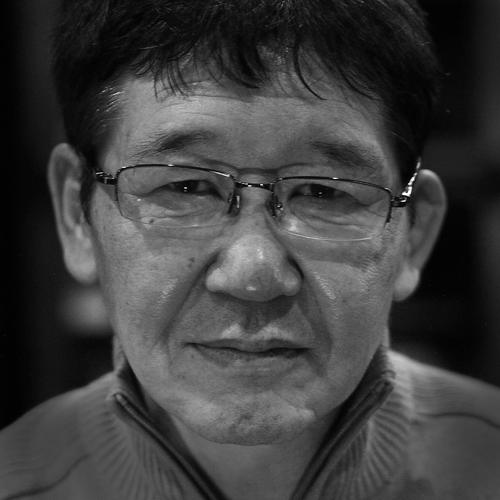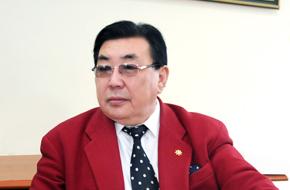Lamaism in Mongolia
The Mongolian people's knowledge of the history of Lamaism in Mongolia and its significance for the culture and life of the Mongols had been systematically erased during the socialist period. In this respect, it makes sense even today to recall some facets of the history of Lamaism in Mongolia. And it is important to understand that religion, as a component of culture, also contributes to the cultural immunity of a nation and thus to its independence.
Just over three decades ago, the Tibetan variant of Buddhism, Lamaism, was no longer a significant factor in the social life of the people of the Mongolian People's Republic and the Mongolian peoples of the Inner Mongolia Autonomous Region (PR China) and the USSR. The Stalinist rulers of the Soviet Union and their political partners in Mongolia not only fought against the Lamaist religion, especially in the period from 1936 to 1940, as ‘opium for the people’, ‘counter-revolutionary’ and a ‘rallying point for nationalist forces’, but also physically liquidated the clergy, destroyed the monasteries and thus permanently curbed the Lamaist religion.[i] The Republic of China, on the other hand, always maintained a cautious distance from the Lamaist religion for good reason. After all, on the one hand, this religion had the inherent power of an organising and unifying force of the Pan-Mongolian nationalism that kept flaring up. On the other hand, the close ties to the Dalai Lama and Tibet also revealed regional dimensions of political conflict potential, which led China at the time to more or less allow the religion to flourish. In the People's Republic of China that followed, the Maoist rulers pursued a policy similar to that of the Soviets in the 1930s, primarily for ideological reasons. Later, the communists ruling China refined their calculations. Religious policy remained consistent in terms of power politics, but it was given a more moderate approach, which was apparently even based on religious traditions. What the Soviet Union and the People's Republic of China had in common, however, was the ‘separation of state and religion’. Although the relevant laws also spoke of ‘freedom of belief’, political practice only recognised the consistent containment of religion with all the means at its disposal.[ii]
In Mongolia itself, the sustainability of Stalinist religious policy was clearly felt for decades. The believers, who made up the majority of the population, had become accustomed to denying their religion to the outside world. Religious conversations only took place in the inner family circle.
It was only in 1945 that the Gandantegchinlin Monastery in the Mongolian capital Ulaanbaatar, and only this one monastery, was allowed to resume its activities.[iii] The monastery was now allowed to hold prayer meetings in Tibetan again, albeit under the watchful eye of the government. Later, the religious activities of the Gandantegchinlin Monastery were not part of a more liberal religious policy of the socialist state, but rather an important part of the foreign policy self-portrayal of the Mongolian People's Republic. The latter had initiated the founding of the ‘Conference of Asian Buddhists’ in Ulaanbaatar in 1970, which was eventually institutionalised in 1974 under the name ‘Asian Buddhist Peace Conference’ with a permanent seat in Ulaanbaatar.[iv]
During the 1960s and 1970s, official propaganda conveyed the impression that Lamaism or even a Lamaist influence did not exist among the population. However, the Dalai Lama's visit to Mongolia in July 1979 was to show that this image hardly corresponded to reality. The visit mobilised crowds that were almost unimaginable by Mongolian standards at the time. A Russian eyewitness reported: ‘From early in the morning, masses of people poured out of the yurt settlements into the alleyways, merged into streams on the streets and surged against the monastery walls. Frail old people were carried in on their shoulders, looking at the world with teary and grateful eyes... From all sides came the murmur of the old people letting their rosaries slip through their fingers.’[v]
The unexpected response of the population to the Dalai Lama's visit occupied the politburo of the sole ruling Mongolian Revolutionary People's Party (MRVP) in several consultations. They finally agreed on measures to strengthen the atheistic education of the population[vi]. Officially, it was announced that every citizen of the MVR had the right to adhere to their religious beliefs, but in fact the possibilities for practising the faith had been reduced to an absolute minimum. In sociological studies commissioned by the MRVP and published in its party newspaper ‘Ünen’ in 1981, it was claimed that the number of believers ‘who became believers under the influence of their families’ was around 18 per cent of those surveyed.[vii] Regarding the social composition of believers, an analysis from 1982 stated: ‘Although the vast majority of believers are old people and mainly those who work in the household, there are a small number of people with a low level of education and lack of awareness or young people among them’.[viii] In a survey from 1985, it was emphasised that 70 percent of the ‘deep believers’ were old or mainly women.[ix] It should be noted that the analyses were only carried out among the rural population, who were considered the actual keepers of Mongolian traditions. However, the results obtained at the time must be treated with great caution, as the situation was by no means such that people could openly profess their faith. The fear and reluctance to speak out publicly on this issue, which had been passed down from generation to generation since the 1930s and 1940s, jeopardised the objectivity of such an investigation from the outset. At the same time, it would hardly have been in the interests of the socialist raison d'état at the time to admit higher proportions of believers in public. After all, this would have jeopardised the effectiveness and success of the state's atheist education. An article by the First Deputy Minister of Public Security, Colonel General A. Jamsranjav, published under the heading ‘Let's increase political vigilance’[x], revealed that the Mongolian government categorised religion and belief as sensitive areas that had a significant impact on ‘national security’. Even the Mongolian reorganisation or ‘perestroika’ did little to change the state's attitude towards the Lamaist religion for the time being. As late as 1987, when the Mongolian ‘perestroika’ was already entering its third year, the author of an article under the striking heading ‘Demand for improvement of atheist agitation’ spoke out in the face of ‘disturbing religious tendencies’ in the Sum Khairkhandulaan, Uyanga, Züünbayan-Ulaan, Khüjirt, Bat-Ulzii and Kharkhorin of the Uvurkhangai-Ajmag, the MRVP committees had to analyse them thoroughly and ‘wage a decisive struggle’ against them.[xi] Nevertheless, the reorganisation process initiated by the MRVP in 1985 provided a framework for a much freer practice of the faith. The Ambassador of the Republic of India to Mongolia, Bakula Rin-po-c'e[xii], who was accredited in 1987, played an important role in the tentative process of re-Lamaisation, whereby ‘re’ merely implied that one dared to confess. Ambassador Bakula was a Lama, himself a born-again priest of high rank and once one of the Dalai Lama's former teachers. Bakula's accreditation led to a paradoxical situation: in Mongolia, which had been one of the main countries of Lamaism in earlier centuries, the ambassador of another state represented both the only and the highest reincarnation living in Mongolia. At the time, this fact in itself also pointed to a geopolitical dimension of the problem, particularly with regard to China. It was undisputed that the person of Bakula was of particular importance to Mongolian believers. Privately distributed pamphlets stated, among other things: ‘If you ask who is the most respected person in Mongolia today, I say without any doubt: Bakula Rin-po-c'e. The people worship him, love and respect him... The fact that Bakula Rin-po-c'e came to Mongolia is no ordinary matter. He is not the ambassador of India per se. The many believers see him as a messenger of Buddha who brings us enlightenment of the mind as well as strength and health."[xiii] From 1990 onwards, the process of re-Lamaisation was not limited to Mongolia alone, but also progressed rapidly in the “Mongolian borderlands” on the Russian side. The Dalai Lama himself promoted this process through his visits to Buryatia, where he took part in the celebrations for the 250th anniversary of the spread of Lamaism in Ulan-Ude in September 1992[xiv], and to Tuvinia, which he visited in autumn 1992. During the latter visit, a co-operation agreement was signed between the Tuvan government and the Dalai Lama's court. The Dalai Lama consecrated the Khamba Lama of the Tuvan capital Kyzyl as the official high priest of Tuvinia and gave substantial funds for the construction of a monastery. The two visits were also preceded by a visit to Mongolia. From 27-29 September 1991, the Dalai Lama visited the Gandantegchinlin Monastery in Ulaanbaatar. The Mongolian government kept a low profile. Official meetings between the Dalai Lama and Mongolian government representatives did not materialise. The Mongolian Ministry of Foreign Relations emphasised in an official statement that ‘there is no reason to regard the Dalai Lama's visit to our country, which was at the invitation of church institutions and at the request of many believers, as a change in the foreign policy of the government of the MVR or its position on certain issues.’[xv]
At the time, some Mongolian religious dignitaries were also toying with the idea of making Mongolia the second most important Lamaist centre after Tibet. However, when they also received positive signals from Beijing, they distanced themselves. Historical experiences from the time of the Manchurian Qing dynasty (1644-1911), which attempted to rule the Mongols primarily with the help of Lamaism, may have been the decisive factor.
The fundamental political reforms of 1990, which ushered in a far-reaching democratisation of Mongolian society, created conditions for the Lamaist religion that made it possible for religious life to develop freely in Mongolia. As early as the beginning of 1990, the Presidium of the Great People's Assembly of the MVR decided to allow the resumption of Lamaist services in the former monasteries of Erdenezuu and Amarbayasgalan.[xvi] This was followed by the founding of monasteries throughout the country. Mongolians who had enjoyed a monastic or religious education in their youth settled in the monasteries as lamas and parents sent their children to the monasteries as novices. In March 1991, on the instructions of the Mongolian president, a Council for Church Affairs was created with thirteen members and the task of ‘coordinating relations between the state and the church as an advisory body to the president.’[xvii] The believers themselves organised themselves nationwide in the ‘Union of Mongolian Believers’. According to a statement by the Federation, there were already four church schools in Mongolia in 1991 (three in Ulaanbaatar; one in Darkhan) and 2,000 monks in the Lamaist monasteries. [xviii] In the course of reviving old traditions, the ‘Union of Mongolian Believers’ raised the question of the reincarnation of rJe-btsun-dam-pa as the religious head of Mongolia quite early on.[xix] Of great importance for the Lamaist religion was how the state would define its relationship to religion in the new constitution to be drawn up. Intensive discussions were held in the relevant state committees, which even culminated in the demand to declare Lamaism the state religion. However, such a definition would have jeopardised the rights of both the large atheist section of the population and the national minorities, particularly the Muslim Kazakhs. Therefore, the principle was agreed upon: ‘In the Mongolian state, the state respects its religion, the religion respects its state’, which became part of the Basic Law that came into force on 12 February 1992.[xx]
The political upheavals in Mongolian society opened a new chapter in the history of the Lamaist religion in Mongolia. Due to its institutionalisation, the Lamaist religion quickly became an integral part of Mongolia's political spectrum. Lamaist believers articulated and organised themselves. They also took on political responsibility. The political upheaval, the associated decline of entire value systems and the resulting spiritual vacuum created a need for new orientations and ideals among many people who had lost their political and moral footing. This led to an appropriate influx into the Lamaist religion, albeit more for traditionalist and less truly religious motives. However, the institutionalised Lamaist religion also faced challenges in this process: if it wanted to survive in the long term, it had to renew itself and adapt to modern society. This required the Lamaist clergy to communicate Buddhist teachings and values to the people in a simple and understandable way, to make their own concerns comprehensible and, for example, to hold part of the liturgy in Mongolian.
The rapid resurgence of Lamaism as a political factor at the time also raised the question of its historical genesis in Mongolia. After all, the Mongolian people's knowledge of the history of Lamaism in Mongolia and its significance for the culture and life of the Mongols had been systematically erased during the socialist period. In this respect, it makes sense even today to recall some facets of the history of Lamaism in Mongolia. And it is important to understand that religion, as a component of culture, also contributes to the cultural immunity of a nation and thus to its independence.
Notes
[i] Udo B. Barkmann, Erste Anmerkungen zu einem traurigen Kapitel der mongolischen Geschichte – die 1930-er Jahre (First notes on a sad chapter of Mongolian history - the 1930s), Asien, Afrika, Lateinamerika, Berlin 20 (1993), p. 1043.
[ii] Монгол Улсын Үндсэн Хууль, эмхгэж тайлбар бичсэн Ж. Амарсанаа, О. Батсайхан, Улаанбаатар 2004, p. 262.
[iii] Монголын Буддын шашинтны төв Гандантэгчинлин хийдийн товч танилцуулга, Улаанбаатар 1971.
[iv] Buddhists for Peace, Asian Buddhist Conference for Peace, Ulaanbaatar 1976.
[v] L. Shinkaryov, Farewell to the Yurt, Leipzig 1981, р. 187.
[vi] Шиншлэх ухааны шашингүйн үзлийн үндэс, Улаанбаатар 1981, р. 191.
[vii] Е. Лувсанбалдай, Шиншлэх ухааны шашингүйн хүмүүжил, Үнэн, 31 October 1981.
[viii] С. Дан-Аажав, Үзэл суртлын ажил, шашингүйн хүмүүжил, Үнэн, 17 April 1982.
[ix] З. Ухнаа: Шашингүйн хүмүүжлийн ажлын үр нөлөөг дээшлүүлье, Үнэн, 29 May 1985.
[x] А. Жамсранжав: Улс төрийн сонор сэрэмжийг өндөржүүлье, Үнэн, 4. January 1984.
[xi] Б. Лхамсүрэн, Шашингүйн сурталчилгааг сайжруулах шаардлага, Үнэн, 27 March 1987.
[xii] Бакула Ренбүүчий, Хөдөлмөр, 13 November 1990.
[xiii] О. Дашбалбар, Бакула Ренбүүчий, хувийн манускрипт.
[xiv] О. Дашбалбар, Далай ламын хувилгаан шидэээр бөмбөг дэлбэрэсэнгүй, Зохист аялгуу 9 March 1993.
[xv] Гадаад харилцааны яамны төлөөлөгчийн мэдэгдэл, Ардын Эрх, 27 September 1991.
[xvi] Шашны хурал, мөргөлийн ажиллагааг сэргэээх болов, Үнэн, 25 February 1990.
[xvii] Ерөнхийлөгчийн дэргэдэх шашны асуудал эрхлэх зөвлөлийн ажиллах журам, Ардын Эрх, 28 March 1991.
[xviii] Ардын Эрх, 11 April 1991.
[xix] С. Уянга: Есдүгээр Богд хэзээ тодрох вэ?, Ардын Эрх, 23.07.1991. Т. Ганди, Есдүгээр Богд тодрох уу?, Ардын Эрх, 13.09.1991.
[xx] Монгол Улсын Үндсэн Хууль, эмхгэж тайлбар бичсэн Ж. Амарсанаа, О. Батсайхан, Улаанбаатар 2004, p. 463.







